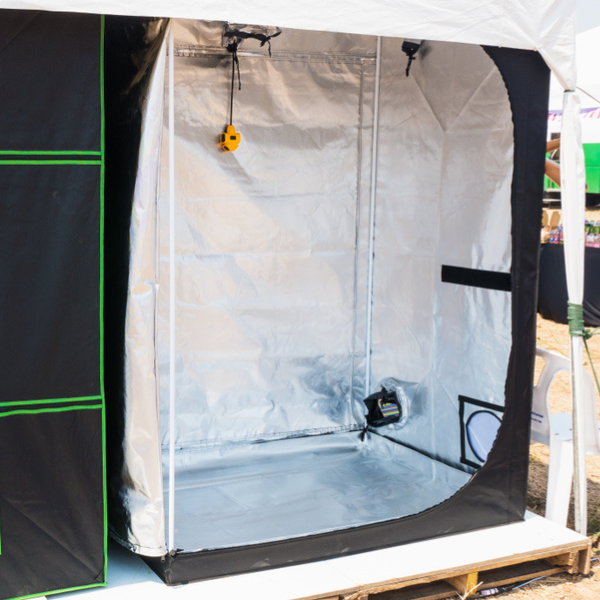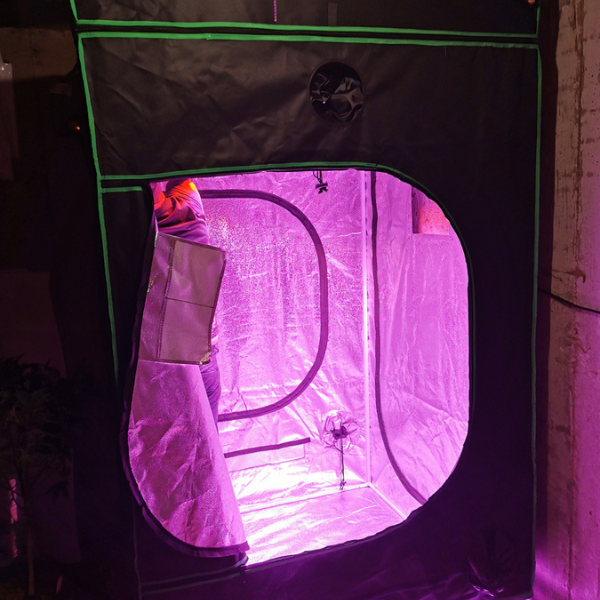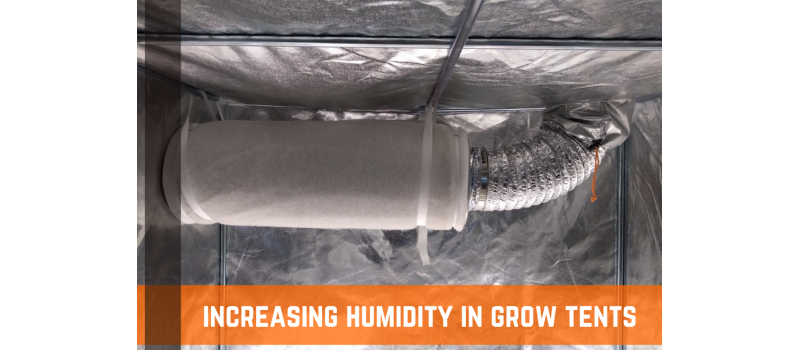Your plants' growth can be significantly stunted by low humidity, particularly in the early phases of their development. But be careful. The effects of high humidity can be far more severe. If the humidity level in your home is dangerously low, you should invest in a humidifier to bring it up, but if it is only slightly off, you could be better off doing nothing. Being slightly below average won't have much of an effect, while being above average will. As is so often the case, it is advisable to keep things as straightforward as possible.
Why is it Important to Control the Humidity?
Your plants are going to suffer if the humidity in your grow tent is not properly controlled. Both extremes of a spectrum have the potential to be problematic. Your plants are far more likely to experience problems with mold and mildew if the relative humidity is too high. These can swiftly spread throughout a grow tent, causing the crop to be completely destroyed.
Additionally, an excessive amount of humidity will interfere with the uptake of nutrients. Since the stomata in your plant's leaf can detect when there is an abundance of moisture in the air, your plant will stop absorbing moisture via its roots when it realizes that there is sufficient moisture in the air.
Because this is where you put your nutrients, any absorption of those nutrients will stop here as well. This causes the growth of the plant to slow down or perhaps stop completely, which can result in nutrient deficits. If there is not enough moisture, on the other hand, your plants will become parched and more vulnerable to the effects of heat stress. Therefore, regardless of where you fall on the spectrum, you're going to have problems, and your plants won't be able to grow.
Because of this, maintaining a steady level of humidity inside the grow tent is critical. In a moment, we'll go through how you can accomplish this, but first, let's discuss the relative humidity range that's ideal for the various stages of plant development.

Does the Temperature Have an Effect on the Ideal Range of Humidity?
As you may have guessed, the temperature does, in fact, play a factor in determining the optimal location for you to store your humidity. In general, plants thrive best in air that has a trace of moisture in it. However, this range shifts throughout the plant's existence as it goes through its many stages.
During the seedling and early vegetative stages, plants prefer higher moisture levels; but, as the plant matures, this range should gradually decrease to the lower end. In each of the phases, the following are some general parameters for the humidity in the grow tent:
- Seedling/early veg: 70-75%
- Veg: 50-70%
- Flower: between 40% and 50%
How To Increase Humidity In A Grow Tent
Before we discuss the most effective ways to boost the humidity levels in a grow tent, we want to make it clear that you may choose not to increase it at all. This is something that we want to bring out before we get into the specific methods.
Use A Humidifier
A grow tent or grow room humidifier is the most effective tool you can use to enhance the relative humidity in your growing space on a constant basis. It is the simplest approach, and you can acquire really excellent ones for not an excessive amount of money.
When shopping for a humidifier, there are only few key features you should try to find. It should come equipped with a humidistat that is integrated right in. You will be able to program it in such a way that it will turn itself off if the humidity reaches a certain level and then turn itself back on again when the humidity falls below that level. Simply put, it makes everything lot simpler for you.
You should also look for one that has a tank capacity that is satisfactory so that you do not have to continually refill it. The very minimum for a tiny grow tent should have a tank that holds 1 gallon, while a larger tent should have a tank that holds 6 gallons.

Bring Down Ventilation
Reduced ventilation contributes to an increase in humidity in two different ways. To begin, the movement of air inside the tent helps to evaporate any moisture that may be present. Second, the moisture in the air is pulled out of the tent by the extraction fan when it is exhausted.
It is obvious that there are some circumstances in which it is not possible to lower the volume of air that is expelled from the tent. It's possible, for instance, that you're having trouble with the heat. Always check that the amount of fan power you have available is adequate for the size of your grow tent.
However, if you are able to lessen the power of your extractor fan without causing any other concerns, this is a simple method that may be used to raise the humidity levels inside of the grow tent. The top grow tent fans each come with a variety of speed settings.
Reduce Temperatures
Reducing the grow tent's temperature increases relative humidity because colder air needs less moisture to become saturated than warmer air. It should go without saying that you should avoid resorting to reducing the temperature if doing so would result in the temperature falling below the appropriate range for your plants and the present growth stage.

Include Water
Simply adding more water to your tent is a simpler solution to this problem. You can accomplish this by positioning a number of water-filled bowls, pails, or other containers on the ground. Another option is to put a damp towel or many damp towels inside the tent.
In terms of reaching the desired level of humidity and maintaining it, it should come as no surprise that this approach is not as precise as utilizing a humidifier. You will need to keep an eye on it and make adjustments until you get it to the desired level. In addition to this, you will need to restock any empty containers and re-wet any towels.

